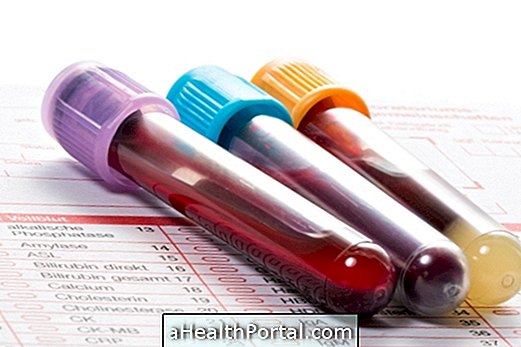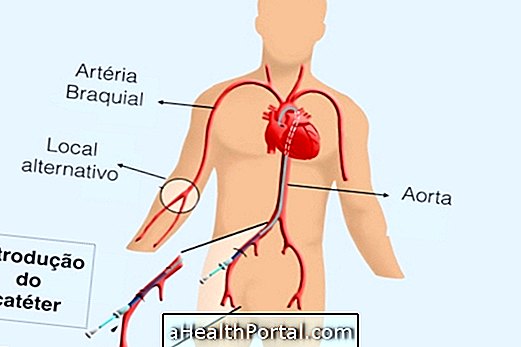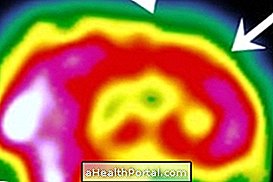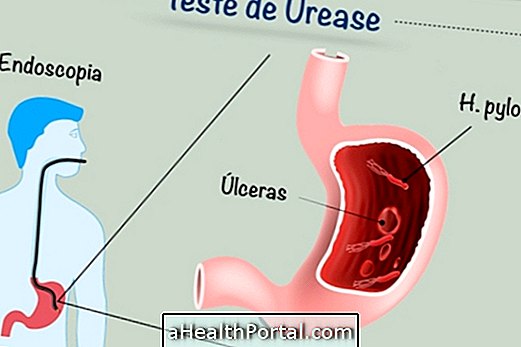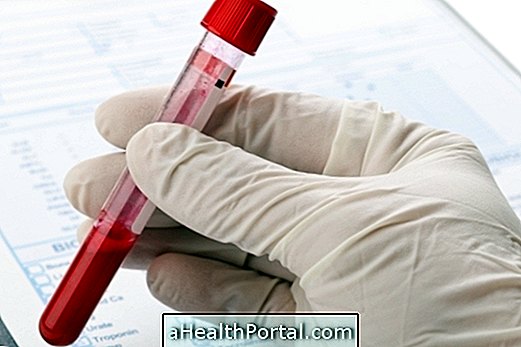To identify the cancer can be requested by the doctor to perform the dosing of tumor markers, which are substances produced by the cells or the tumor itself, such as AFP and PSA, which are elevated in the blood in the presence of certain cancers. Know the signs and symptoms that can indicate cancer.
The dosage of tumor markers is important not only to detect cancer, but also to assess tumor development and response to treatment.
Although tumor markers are indicative of cancer, some benign conditions may lead to their increase, such as appendicitis, prostatitis or prostate hyperplasia, and therefore, in most cases, other tests are necessary to confirm the diagnosis, such as ultrasound or magnetic resonance imaging, for example.
In addition, the values of tumor markers of the blood test vary according to the laboratory and the gender of the patient, and it is important to take into account the laboratory reference value. Here's how to understand the blood test.
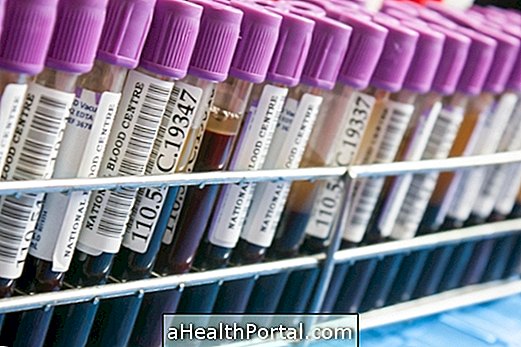
8 tumor indicators that detect cancer
Some of the most commonly requested tests by the doctor to identify cancer are:
1. AFP
What it detects: Alpha-fetoprotein (AFP) is a protein whose dosage can be ordered to investigate tumors in the stomach, intestine, ovaries or presence of liver metastases.
Reference value: Usually when there are malignant changes the value is higher than 1000 ng / ml. However, this value may also be increased in situations such as cirrhosis or chronic hepatitis, for example, its value being close to 500 ng / ml.
2. MCA
What it detects: The carcinogen-associated mucoid antigen (CAM) is usually required to check for breast cancer. To know some signs of breast cancer read: 12 symptoms of breast cancer.
Reference value: In most cases it can indicate cancer when its value is higher than 11 U / ml in the blood test. However, this value may be increasing in less severe situations, such as benign tumors of the ovary, uterus, or prostate.
Usually the doctor also requests the dosage of CA marker 27.29 or CA 15.3 for breast cancer monitoring and check the response to treatment and chance of relapse. Understand what the CA 15.3 exam is for and how it is done.
3. BTA
What it detects: Tumor bladder antigen (BTA) is used to help detect bladder cancer and is usually dosed together with NMP22 and CEA.
Reference value: In the presence of bladder cancer, the test has a value greater than 1. The presence of BTA in the urine, however, may also be elevated in less severe problems such as inflammation of the kidneys or urethra, especially when used bladder catheter.
4. PSA
What it detects: Prostate antigen (PSA) is a protein normally produced for the prostate, but in the case of prostate cancer it can have its concentration increased. Learn more about PSA.
Reference value: When the concentration of PSA in the blood is greater than 4.0 ng / ml it may indicate the development of cancer and, when it is higher than 50 ng / ml, may indicate the presence of metastases. However, to confirm the cancer is necessary to perform other tests such as rectal examination and ultrasound to the prostate, since the concentration of this protein may also be increased in benign situations. Understand more about how to identify this type of cancer.
5. CA 125
What it detects: The CA 125 is a widely used marker to check the chance and monitor the development of ovarian cancer. The dosage of this marker should be accompanied by other tests so that the correct diagnosis can be made. Learn more about the CA 125.
Reference value: It is usually a sign of ovarian cancer when the value is higher than 65 U / ml. However, the value may also be increased in the case of cirrhosis, cysts, endometriosis, hepatitis or pancreatitis.
6. Calcitonin
What it detects: Calcitonin is a hormone produced by the thyroid that may be increased primarily in people with thyroid cancer, but also in people with breast or lung cancer, for example. See how the calcitonin test is done.
Reference value: It can be a sign of cancer when the value is higher than 20 pg / ml, but, the values may also be altered due to problems such as pancreatitis, Paget's disease and even during pregnancy.
7. Thyroglobulin
What it detects: Thyroglobulin is usually elevated in thyroid cancer; however, other markers such as calcitonin and TSH should also be used to diagnose thyroid cancer, for example, since thyroglobulin may be increased even in people who do not have the disease.
Reference value: Normal thyroglobulin values are between 1.4 and 78 g / ml, above that may be indicative of cancer. Here are the symptoms of thyroid cancer.
8. CEA
What it detects: Carcinoembryonic antigen (CEA) can be dosed for different types of cancer, and is usually elevated in cancer in the intestine, affecting the colon or rectum. Learn more about bowel cancer.
Reference value: To be indicative of cancer, the CEA concentration must be 5 times higher than the normal value that is up to 5 ng / mL in smokers and up to 3 ng / mL in nonsmokers. Understand what the CEA exam is and what it does.
In addition to these blood tests, other hormones and proteins, such as CA 19.9, CA 72.4, LDH, Cathepsin D, Telomerase, and human chorionic gonadotrophin may be evaluated, for example, which have changed reference values when cancer is developing. some organ.

How to confirm the diagnosis of cancer
In the case of suspected cancer, it is necessary to confirm the diagnosis, usually requested by the physician, complementary imaging tests, such as:
- Ultrasound: Also known as ultrasound, which is an examination that can detect lesions in organs such as the liver, pancreas, spleen, kidneys, prostate, breast, thyroid, uterus and ovaries;
- Radiography: This is an x-ray examination that helps identify changes in the lung, spine and bones;
- Magnetic Resonance Imaging (MRI): This is an imaging test that detects changes in organs such as the breast, blood vessels, liver, pancreas, spleen, kidneys, and adrenals.
- CT scan: This is done when X-ray changes occur and are usually required to evaluate the lungs, liver, spleen, pancreas, joints and pharynx, for example.
In most cases, confirmation of diagnosis is done by combining several tests, such as patient observation, blood test, MRI, and biopsy, for example.
